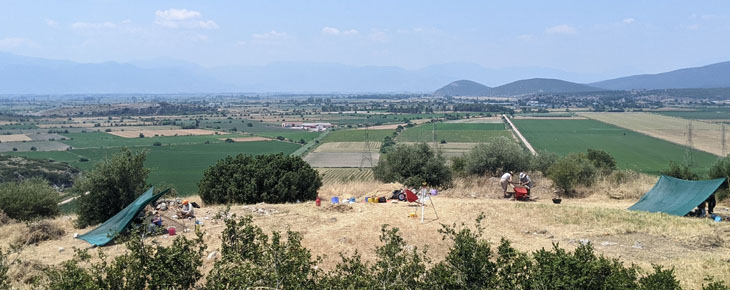
KOPAIC CULTURES, ECONOMIES & LANDSCAPES (KOCECOLA)
INTERNATIONAL COLLABORATIVE ARCHAEOLOGICAL INVESTIGATION OF A PREHISTORIC SETTLEMENT IN ITS PHYSICAL, HUMAN, AND HISTORICAL CIRCUMSTANCES
- Dr. Michael F. Lane, Departments of Ancient Studies, University of Maryland, Baltimore County (U.M.B.C.), Field Director
- Dr. Alexandra Charami, Superintendent of Antiquities of Viotia, Hellenic Ministry of Culture and Sports (H.M.C.S.), Supervising Director
- Dr. Elena Kountouri, Chief of the Directorate of Prehistoric and Classical Antiquities, H.M.C.S., Co-director
Synopsis
KOCECOLA is a four-year program of precise stratigraphic excavation, micromorphology, human bioarchaeology, zooarchaeology, archaeobotany, and material culture studies at Aghia Marina Pyrghos (A.M.P.) in the Kopaic Basin of central mainland Greece. It is built on the successes of the AROURA geophysical and surface survey program (2010–2014) and the MYNEKO test excavation program (2016–2019), also co-directed by Dr. Lane.
![[Bittner and Lane, 2016]](../../images/Sifting.jpg)
KOCECOLA’s Aims
- To sample systematically and adaptatively the full extent of settlement previously defined and mapped at A.M.P., sampling with units large enough to expose activity areas and their interrelations.
- To conduct this sampling in every identified phase of occupation and inhabitation identified at this site, to reconstruct the ways in which its dimensions, purposes, and types and frequencies of activity took root and changed from the Neolithic Age (before ca. 3100 B.C.E.), the earliest known phase, through the Medieval Period (ca. 1200–1450 C.E.), represented by the watchtower (pyrghos) on the site and even short-term occupation in the modern era.
- Of greatest interest for theories of social development, to explore both topographically and through material culture, cultivated and uncultivated plant proxy evidence, and human and animal bone remains the changing relationship between activities and events at the site and the surrounding human landscape, especially the settlement's connection with the construction of a polder for irrigated agriculture, from the Middle to Late Bronze Age (ca. 1800–1600 B.C.E.), its development over several centuries, particularly its region-wide integration under central authority in the 13th century B.C.E., and its evident abandonment ca. 1190 B.C.E., albeit possibly experiencing sporadic efforts toward partial repair and reuse in the following few centuries.
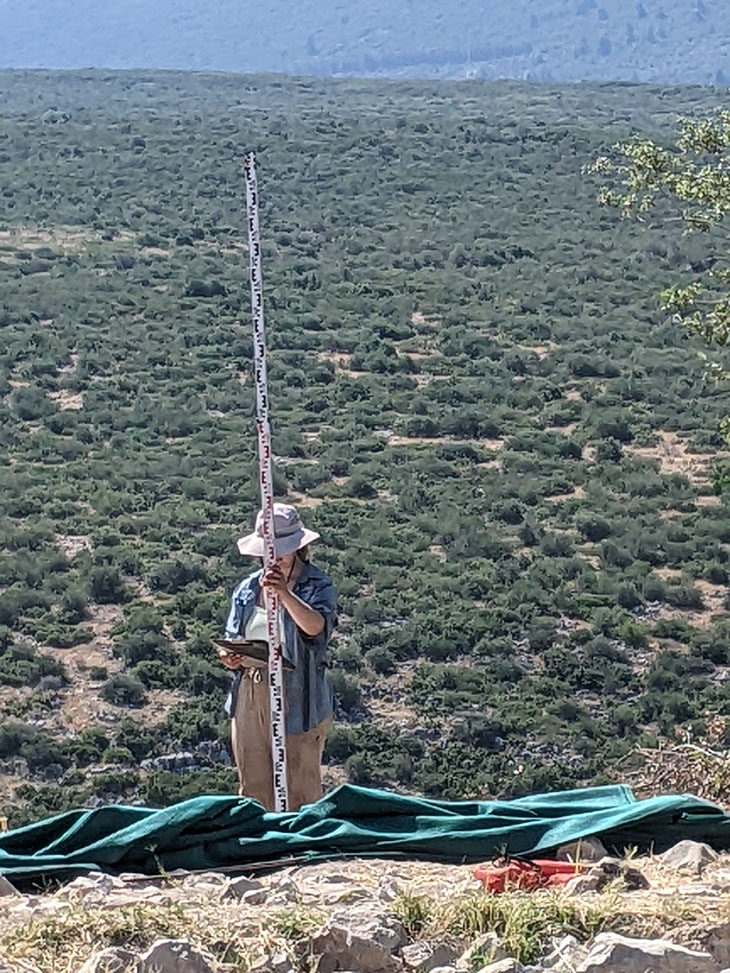
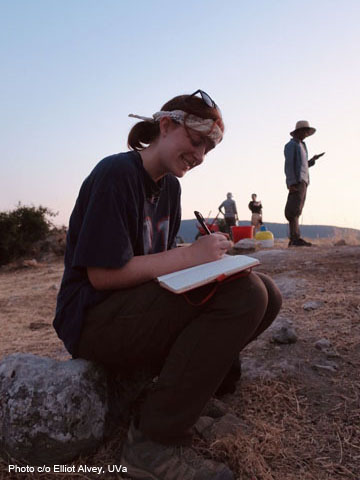
Annual Reports
KOCECOLA Pre-excavation Vegetation Survey, 2022 (DRAFT)
Mycenaean Northeastern Kopaïs Test Program (U.M.B.C. website)
Archaeological Reconnaissance of Uninvestigated Remains of Agriculture (U.M.B.C. website)
Links
An article on the experience of a UMBC undergrad in 2024
Visit us on Instagram @kocecola
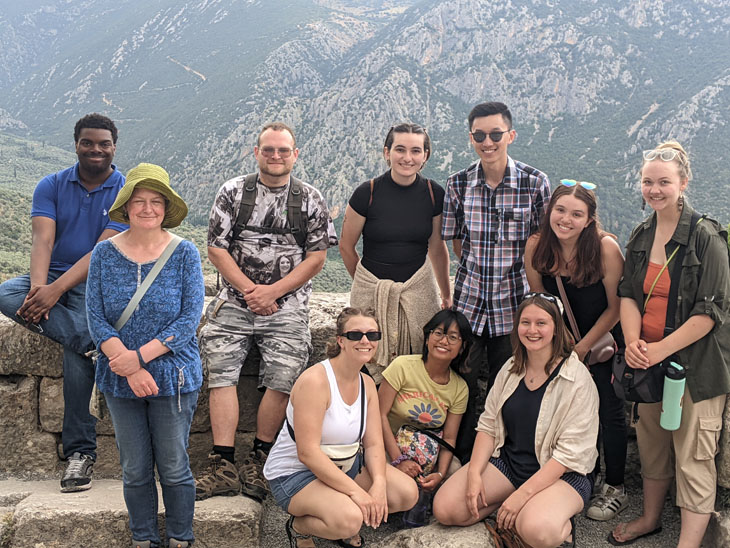
2023 Fieldwork Staff and Students
Dr. Kyle Jazwa (Maastricht University), Mr. Damian Koropeckyj (independent), Ms. Rowan May (York Archaeological Trust), and Ms. Naomi Morales-Glenn (independent). Undergraduate research assistants who participated in field and laboratory operations, from between one and six weeks, completing the team, were Mr. Robert Barry (U.M.B.C.), Ms. Sofia Beroukli (National and Kapodistrian University of Athens, “N.K.U.A.”), Ms. Katie Bjerkaas (U.M.B.C.), Mr. Aidan Bodurtha (N.K.U.A.), Ms. Mare Chavez (U.M.B.C.), Mr. Michael Fischer (U.M.B.C.), Mr. George Ftergiotis (N.K.U.A.), Mr. Logan Jackson (U.M.B.C.), Ms. India Kelly (U.M.B.C.); Ms. Abigail Kennedy (University of York), Ms. Eleni Keogh (U.M.B.C.), Ms. Lauren Oster (University of York), Ms. Mriga Rao (U.M.B.C.), and Ms. Brenna Smith (Gallaudet University).
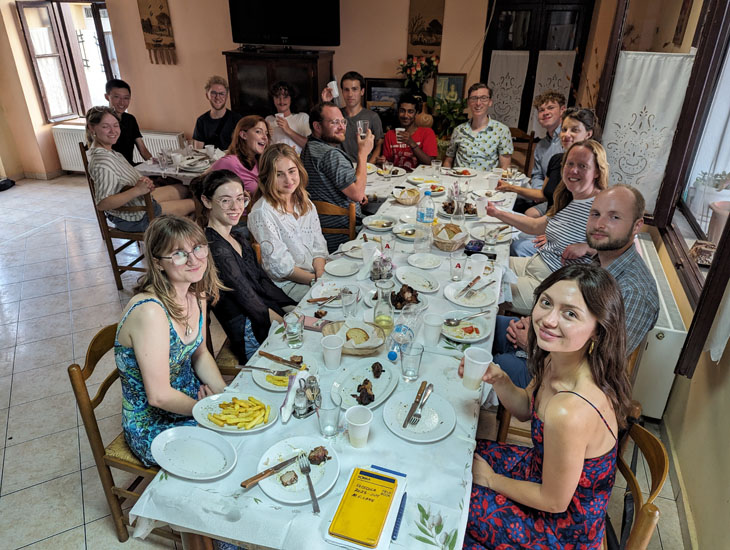
2024 Fieldwork Staff and Students
Mr. Robert Barry (UMBC), Mr. Bendik Bergendal (University of Bergen), Ms. Rachel Channell (independent), Dr. Kyle Jazwa (University of Maastricht), Ms. India Kelly (UMBC), Mr. Damian Koropeckyj (independent), Ms. Rowan May (York Archaeology), Dr. Christopher Nuttall (Swedish Institute at Athens), and Ms. Riia Timonen (University of Leiden). The following undergraduate and post-graduate students participated for fieldwork experience, training, or academic credit hours: Ms. Elliot Alvey (University of Virginia), Ms. Sofia Beroukli (National and Kapodistrian University of Athens “NKUA”), Ms. Katie Bjerkaas (UMBC), Ms. Brady Cavanagh (UMBC), Mr. Pratik Donthamshetty (University of Maastricht), Ms. Lucy Edwards (University of Oxford “Oxon”), Mr. Michael Fischer (UMBC), Ms. Elliot Francolla (Oxon), Mr. George Ftergiotis (NKUA), Mr. Christian Graf (University of Heidelberg), Ms. Elle Heywood (NKUA), Mr. Michael McCann (University of Tennessee, Knoxville), Mr. Alexander Robson (Oxon), Ms. Grace Saunders (University of Virginia), Mr. Rory Shields (Oxon), and Mr. William Smith (University of Manchester).
